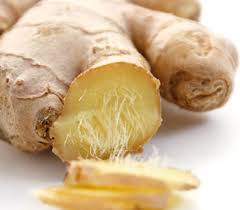TNN | Apr 24, 2012, 12.00AM IST
Spices do much more than just flavour your food. Used correctly, they are a storehouse of curative properties
Spice is nice and even nicer in traditional Indian cuisine. Think about it, what would our curries, gravies and sabzis be without essential ingredients like chillies, turmeric, coriander and the likes? And what would a tadka be without mustard, cumin and curry leaves?
And there's that all important garam masala which - as the name suggests - is a blend of an assortment of spices.
But taste isn't the only benefit you can derive from spices. Ask the elders in your house and they are sure to start off a litany about the various medicinal properties of all the spices that are a part of everyday cooking.
Yes, just like each of these spices have their unique flavour, in their own way they also work to contribute to our health. While turmeric is being researched for its potential to prevent cancer, coriander seeds, which have anti-inflammatory properties, are being studied for their connection to cholesterol reduction. The flaming red chilli is associated with a range of health benefits including reducing congestion, pain relief, prevention of stomach ulcers and even weight loss.
But as the golden rule says, you need to use them in moderation, as using these spices in excessive amounts may just work adversely and harm you. Below are a couple of spices (that we use rather extensively) and their medicinal properties explained:
Garlic (Lahsun)

Yes, it may give you bad breath but when you consider its medicinal properties, that is a small price to pay. Right from helping in maintaining cholesterol and high blood pressure levels to fending off colds, heart disease, infection and even impotence, garlic also has antifungal and antibiotic properties.
Research has also proved that garlic has the ability to reduce the formation of cancer causing compounds and slowing the growth of tumour cells. It also helps raise the levels of HDL (good cholesterol) and prevent LDL (bad cholesterol) from building up on the walls of the arteries, thus reducing the chances of plaque formation. In fact, just two cloves a day can reduce your cholesterol level by a massive nine per cent.
For those suffering from hypertension, garlic helps control the blood pressure by thinning the blood and keeping clots from forming. Remember, one can obtain the most out of garlic when it is consumed in its raw form, crushed or finely chopped. However, don't overdo it - excess garlic can irritate the digestive tract.
Ginger (Adrak)

Apart from flavouring your morning cup of tea, ginger works wonders to treat a whole lot of illnesses. Its anti-inflammatory properties make it a natural remedy for heartburn. It is also effective against morning sickness, migraine, cold and flu, stomach ailments and even those dreaded menstrual cramps.
Ginger is also being researched as an effective treatment for ovarian and colon cancer as it has been found to induce cell death in ovarian cancer cells and slow the growth of colorectal cancer cells.








